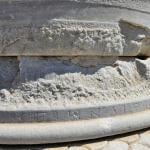This week marks the 25th anniversary of the Tiananmen Square Massacre, in which the Chinese Communists crushed the pro-democracy movement that had prevailed in the Soviet Union.

From 5 Things You Should Know About the Tiananmen Square Massacre | TIME:
In the early hours of June 4, 50 trucks and as many as 10,000 troops rumbled into the streets, TIME reported just days later. The military overwhelmed the civilians and began firing into crowds, but some protesters held fast, throwing rocks and Molotov cocktails. In some cases, they responded with deadly violence: Demonstrators reportedly beat two soldiers to death who had been seen killing a civilian. In another instance, protesters covered an armored personnel carrier in banners and then set the vehicle ablaze, trapping the crew of eight or nine soldiers. The military continued its onslaught and skirmishes lasted throughout the morning, “but by then the great, peaceful dream for democracy had become a horrible nightmare.” A doctor at the time said at least 500 were dead; a radio announcer said 1,000.
A goddess lived and died
A few days before the raid on the square, “in a flash of exuberance” as TIME wrote at the time, the protesters erected a “Goddess of Democracy” that partially resembled the Statue of Liberty. The 30-foot statue swiftly made from Styrofoam and plaster became a symbolic monument to the pro-democracy movement, and was intended to be large enough to be difficult or at least embarrassing for authorities to take down. Tanks crushed her when troops took the square, TIME reported.
The Tank Man was and still is anonymous
“Almost certainly he was seen in his moment of self-transcendence by more people than ever laid eyes on Winston Churchill, Albert Einstein and James Joyce combined,” essayist Pico Iyer wrote in TIME about Tank Man, the nameless individual who was pictured stopping a column of tanks on June 5, a day after the massacre. The man was ultimately hustled to safety by fellow protesters and quite lost to the crowd. Only rumors of his identity persist, and when Chinese leader Jiang Zermin was asked a year later if he know what had happened to the young man, he responded: “I think never killed.”













